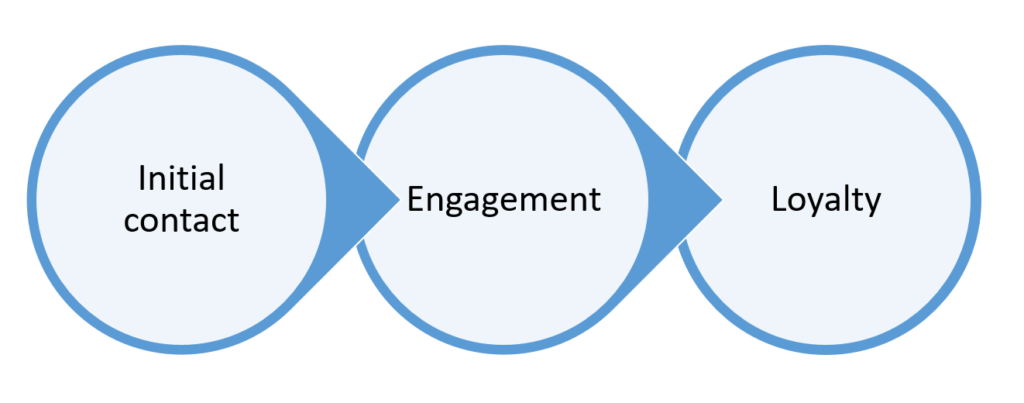Think of yourself and how many times you bumped into a product online that attracted your interest. Then upon logging on Facebook, an advert of it appeared in your News Feed or you received a message straight in your inbox as a follow-up of your recent search.
Nothing of a surprise anymore as we are all aware of the existence of such marketing techniques. This kind of techniques such as re-targeting through emails, adverts and so on, might well form part of a customer’s journey.
Why mapping the customer journey is important for organisations?
Customer journey mapping allows you to understand the various stages a potential client goes through, from when they first come across your product or service to the point when they actually convert to clients and become loyal to your brand.
A customer journey also maps the various touchpoints at which a person interacts with your brand and thus helps you to evaluate your marketing activities versus people’s feelings and readiness in making a purchase.

Every touchpoint with your client counts
Below is a basic example of customer journey and touchpoints, however, this might vary according to the company’s offering, operations and channels it uses. Depending on the nature of business, a customer journey can be shorter or longer i.e. providing product vs. services.

When mapping a customer’s journey there are lots of things to take into account such as the multiple devices and channels people interact with, most often simultaneously, and how these result in multitouchpoints of a customer with your brand.
The use of multitouchpoints make it even more important for brands to offer consistent experiences across the journey. Every time a customer interacts with a brand in any way and through any channel (i.e. visiting a store or coming across an online advert), their feelings and perception about the brand should remain the same.
Measure effectiveness
The customer journey offers a good way to measure effectiveness of marketing activities against business goals and to examine whether there is more space for interaction with prospective clients.
On the other hand, you might find out that the customer journey and feelings of your clients change negatively after a specific activity i.e. on the 5th time they receive an email from you within a week or on the 20th mobile notification they get on their phone within a day.
Always remember to put yourself in your customers’ feet and consider how each touchpoint would make you feel and act. We are all humans after all!




